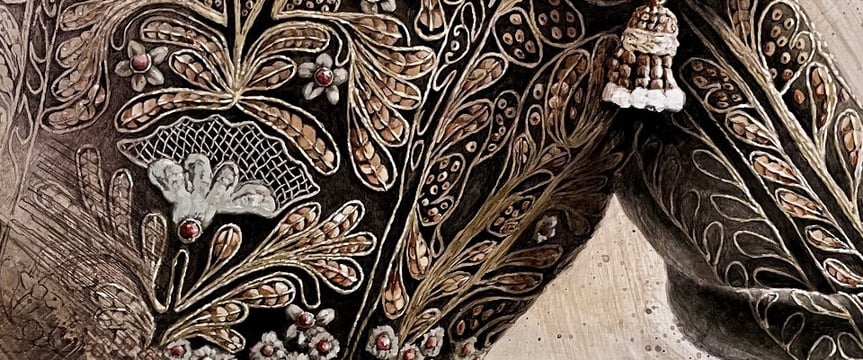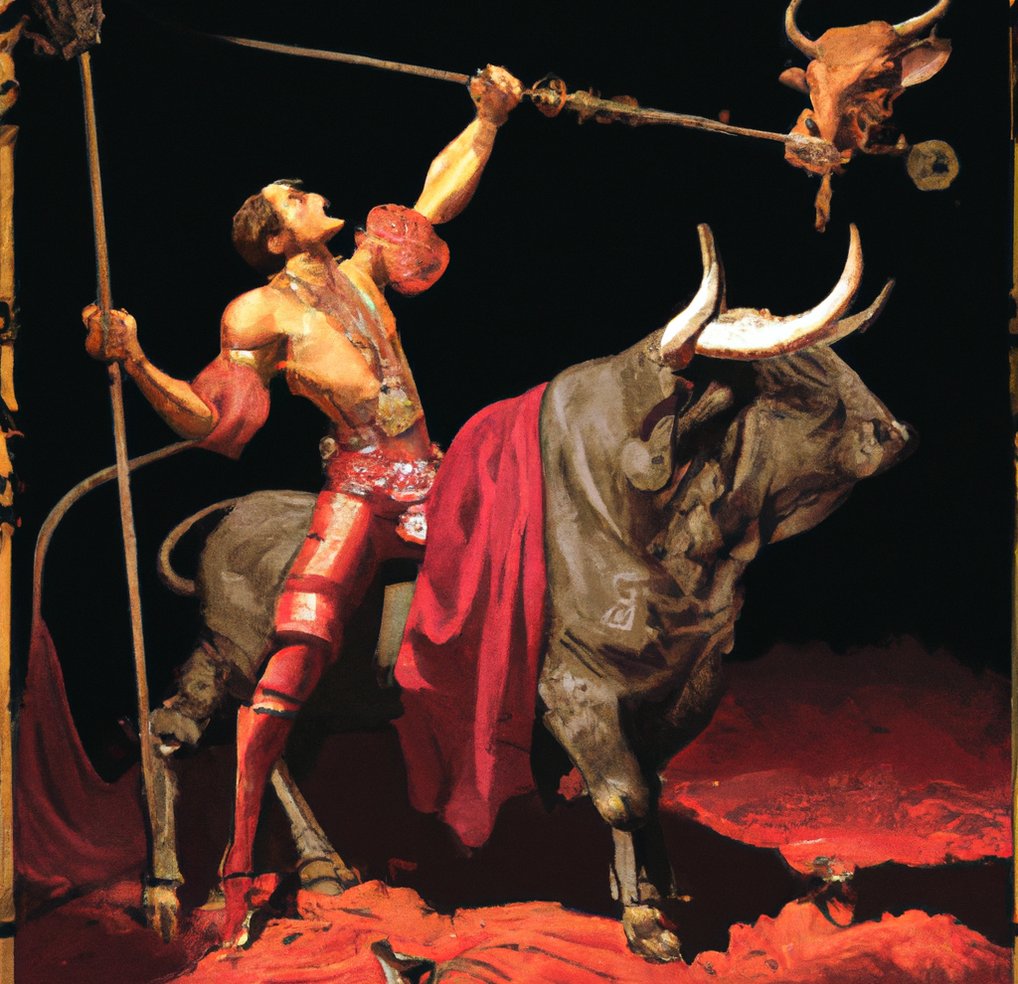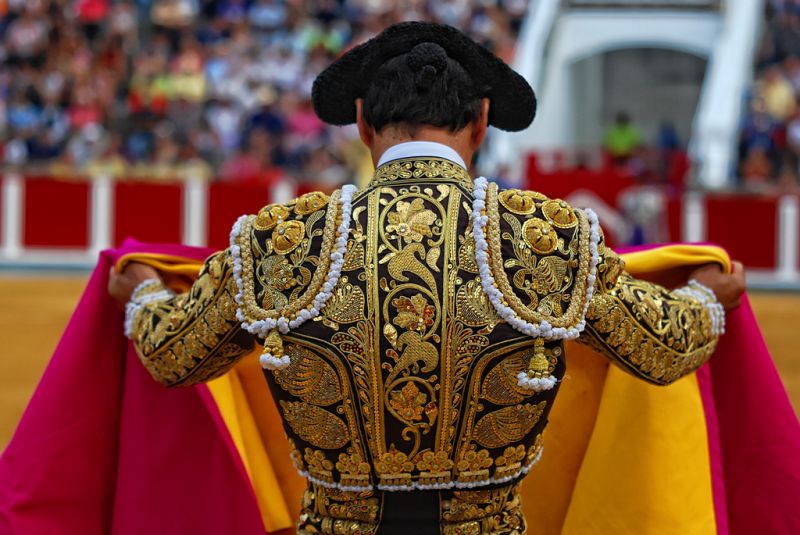
Examination of the equipment and clothing used in bullfighting, including the traditional traje de luces worn by bullfighters
Caracteristics and details
3/23/20236 min read


The Importance of Equipment in Bullfighting
Bullfighting clothing, or trajes de luces, have a rich and varied history that has evolved over time. The traditional trajes de luces were originally designed in the 18th century to emulate the clothing of Spanish court officials, with bright colors and intricate embroidery. However, as bullfighting grew in popularity and became a more structured sport, the clothing began to evolve to meet the demands of the performance.
In the mid-19th century, a new style of bullfighting clothing emerged, characterized by tighter fits and more functional designs. This new style was inspired by the daring and athletic movements of toreros such as Francisco Montes "Paquiro," who emphasized agility and athleticism over formality and decoration.
Throughout the 20th century, bullfighting clothing continued to evolve, with new materials and designs being introduced to make the clothing more comfortable, durable, and protective. The traditional trajes de luces continued to be worn, but were often adapted to suit the changing needs of the sport.
Today, bullfighting clothing is still characterized by its colorful and decorative designs, but modern materials such as synthetic fabrics and Kevlar are often used to make the clothing more comfortable and safe. The traje de luces is typically worn with a bullfighter's cape or muleta, as well as a bullfighting helmet and leg protectors.
While the evolution of bullfighting clothing has been influenced by changing styles and technology, it remains an integral part of the sport's tradition and culture. The clothing worn by bullfighters is an important symbol of the sport's history and values, and serves to reinforce the unique identity of bullfighting as an art form.
The Evolution of Bullfighting Clothing
The Traditional Traje de Luces: A Symbol of the Sport
Bullfighting has a long and rich history that can be traced back to ancient times. Some scholars believe that bullfighting may have originated as a religious ritual in the Mediterranean region, where bulls were sacrificed to the gods. Others point to the Roman Empire, where bullfighting was a popular spectacle that was often staged for public entertainment in amphitheaters.
Equipment plays a crucial role in bullfighting, ensuring the safety and success of the torero. From the protective gear worn by the bullfighter to the intricate tools used during the performance, every piece of equipment is designed to make the spectacle as safe and effective as possible.
The most important piece of equipment in bullfighting is the cape, or capote, which is used by the torero to control and maneuver the bull during the first stage of the fight. The cape is typically made of lightweight, durable material, and is designed to be easily manipulated by the torero.
Another essential piece of equipment is the muleta, a smaller version of the cape used in the second stage of the fight. The muleta is typically red and is used to draw the bull's attention away from the torero's body, allowing him to make more precise movements and maneuvers.
Protective gear is also critical in bullfighting, as the torero is at risk of serious injury or even death during the performance. The torero typically wears a specially designed bullfighting jacket, or chaquetilla, which is reinforced with padding and offers some protection from the bull's horns.
Other protective gear includes a bullfighting helmet, or montera, which is designed to shield the torero's head and face from potential injuries, as well as a leg protector, or taleguilla, which is worn to protect the lower legs and ankles from the bull's horns.
In addition to these essential pieces of equipment, bullfighters also rely on a range of specialized tools and accessories, such as the estoque, a long, pointed sword used to deliver the final blow to the bull, and the banderillas, colorful sticks with barbed ends that are used to weaken the bull during the second stage of the fight.
Overall, the importance of equipment in bullfighting cannot be overstated. From the capote and muleta to the chaquetilla and montera, every piece of equipment serves a critical purpose in ensuring the safety and success of the torero during the performance.
The traje de luces, or "suit of lights," is the traditional clothing worn by bullfighters during bullfights. The traje de luces is an iconic symbol of bullfighting, and is an important part of the sport's tradition and culture.
The traje de luces is characterized by its brightly colored and highly decorated designs, which often include intricate embroidery and sequins. The clothing is typically made from lightweight and durable materials such as silk or satin, and is designed to allow the torero to move with ease and agility during the bullfight.
The traje de luces is also highly symbolic. The bright colors and elaborate designs are intended to evoke the pageantry and grandeur of Spanish court dress, and to reinforce the torero's status as a heroic figure in the eyes of the audience. The traje de luces is also associated with the courage and bravery required to face a charging bull, and serves as a powerful symbol of the torero's willingness to risk his life in pursuit of artistic expression and cultural tradition.
Despite its traditional associations, the traje de luces has also evolved over time to meet the changing demands of the sport. Modern materials and designs have been introduced to make the clothing more comfortable and safe, and some bullfighters now wear variations on the traditional traje de luces that incorporate elements of contemporary fashion and style.
Overall, the traje de luces remains an integral part of the bullfighting experience, and serves to reinforce the sport's unique identity as an art form that combines athleticism, tradition, and cultural heritage.
The Role of Accessories in Bullfighting Fashion
Accessories play an important role in bullfighting fashion, adding to the overall spectacle of the event and highlighting the torero's individual style and flair. While the traje de luces is the centerpiece of the torero's outfit, it is often complemented by a range of accessories, each with its own significance and symbolism.
One of the most recognizable accessories in bullfighting is the montera, or bullfighter's hat. The montera is typically made from black or white felt and is adorned with a chin strap and pom-pom. It is worn throughout the bullfight, and is an important part of the torero's overall appearance.
Another key accessory is the capote, or cape, which is used by the torero to maneuver and manipulate the bull during the early stages of the fight. The capote is typically made from a brightly colored fabric, and is designed to be lightweight and easy to move around. The design of the capote can vary depending on the individual torero's preferences, with some opting for elaborate designs and embroidery.
In addition to the montera and capote, the torero may also wear other accessories, such as gloves, stockings, and leather shoes. These items are typically made from high-quality materials and are designed to provide the torero with comfort and protection during the fight.
Overall, the role of accessories in bullfighting fashion is to add to the overall spectacle of the event and to highlight the individual style and flair of each torero. These items serve as powerful symbols of the sport's tradition and culture, and help to reinforce the torero's status as a heroic figure in the eyes of the audience.
Contemporary Trends in Bullfighting Attire.
In recent years, there have been some notable trends in bullfighting attire, reflecting changes in fashion and modern tastes. While the traditional traje de luces remains the central component of a torero's outfit, there has been some experimentation with new fabrics, colors, and designs.
One trend that has emerged in recent years is the use of more vibrant colors in bullfighting attire. While traditional trajes de luces were typically made in shades of gold or silver, some toreros have begun incorporating brighter colors, such as red or purple, into their outfits. These bold hues add a modern touch to the traditional outfit and help to make the torero stand out in the ring.
Another trend in bullfighting attire is the use of alternative fabrics. While traditional trajes de luces were typically made from heavy wool or silk, some toreros have experimented with lighter, more breathable fabrics, such as polyester blends. These fabrics are designed to keep the torero cool and comfortable during the intense physical exertion of the bullfight.
Finally, there has been some experimentation with new designs and styles of bullfighting attire. Some toreros have opted for more streamlined, modern designs, with sleek lines and minimal ornamentation. Others have chosen to incorporate more elaborate embroidery and embellishments, creating a more ornate and detailed look.
Despite these changes, however, the traje de luces remains the iconic symbol of bullfighting attire. The intricate embroidery, rich fabrics, and unique styling of this traditional outfit continue to captivate audiences around the world, and are a testament to the enduring power of bullfighting as both an art form and a cultural tradition.




Toros de Lidia
